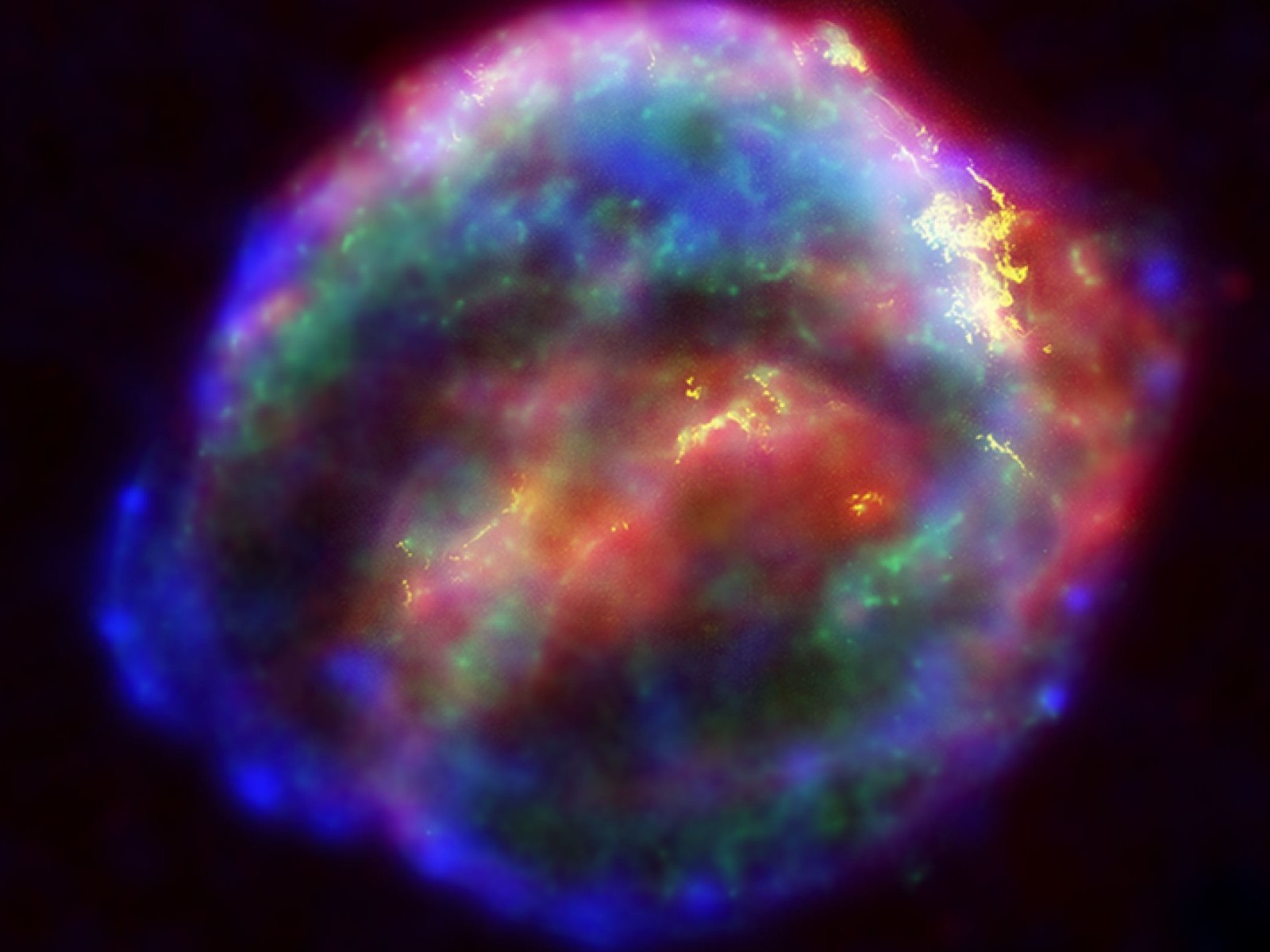Kepler’s Supernova
Four hundred years ago, an object in the constellation Ophiuchus (“the snake-holder”, near Sagittarius and Scorpio) suddenly lit up with an intensity greater than any other star, brighter even than Venus. Astronomers of the era, including Johannes Kepler, thought they were observing the birth of a new star.
What they were actually observing, of course, was the death of an old star, what we have come to know as a “supernova”. In this composite of photos taken by the Hubble space telescope and the terrestrial Chandra telescope, we can see the bright filaments of solid matter surrounded by a vast cloud of hot gases, invisible to the human eye, but exposed by the x-ray vision of Chandra.
The cloud of debris from Kepler’s Supernova now measures about 14 light-years across and is expanding at a rate of 4 million miles per second. At a distance of merely 13,000 light-years from Earth, Kepler’s Supernova is one of only six supernovas ever observed in our own galaxy. It is still not known whether this supernova will continue to disperse or eventually collapse into a Black Hole.
![]()
